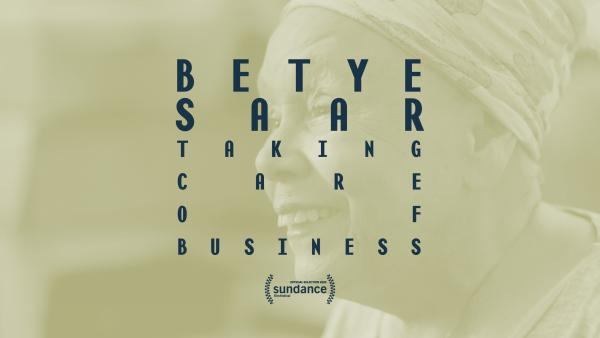We are proud to share that LACMA Productions’ latest short documentary, Betye Saar: Taking Care of Business, directed by Christine Turner, has been selected for the 2020 Sundance Film Festival. The film was originally commissioned to honor Saar during LACMA’s 2019 Art+Film Gala. Last week, the film was also selected as a New York Times Op-Doc.
We recently caught up with Christine to find out more about her artistic process and working with Betye Saar.
How did you come to filmmaking—was it something you were interested in at an early age?
I had to be in 4th or 5th grade when my best friend and I learned to use her Dad’s camcorder. We started making little movies—my favorite was called, “Murder I Wrote,” inspired by our mutual love of Angela Landsbury at the time. That was the first and last mystery I’ve made.
What kind of subjects are you drawn to?
Recently, I’ve filmed with a number of artists, but I’ve also captured the work of activists and educators, and spent many years following the journey of a funeral home director. I’m interested in everyday people who are passionate about what they do.
Which filmmakers have most influenced your work?
One filmmaker that comes to mind is Les Blank. He directed a documentary called Gap Tooth Women that explores beauty standards. I remember “seeing” myself reflected on screen for one of the very first times in that film. His whole approach to the subject matter really opened up a world of filmmaking possibilities to me.
As a filmmaker who works in both narrative and documentary, what aspects of documentary filmmaking do you find to be the most compelling?
It’s an excuse to talk with people. If you’re lucky, you get to go places you’re not supposed to go and meet people you might not ordinarily meet. I’m still in touch with many of the people I’ve filmed with, which makes the work all the more rewarding.
Conversely, what's the most challenging aspect of making a documentary versus a narrative piece?
The filming process can be very unpredictable. You’re constantly changing gears and adapting to new circumstances. But the bigger challenge is getting things right. People place trust in you as a filmmaker and with that comes a responsibility to do justice to their stories.
What struck you as the most unexpected aspect of Betye Saar's work as an artist?
I was really struck by the sheer volume of work by Betye. In addition to her assemblages, she’s made countless drawings, prints, and collages, as well as several short films, like Colored Spade and Eyeball, which are referenced visually in the film.
Is there anything you wish you could have included in the film but weren't able to?
Unfortunately, there wasn’t room to include Betye’s influences such as Simon Rodia, whose Watts Towers Betye first encountered when she was a small child. Joseph Cornell was another artist who inspired her to pursue assemblage.
What do you hope to achieve with this film?
I’m hoping it brings greater awareness to Betye’s work and inspires those who are interested to go out and see it in person!
With the establishment of the Art+Film initiative, LACMA has dedicated resources to producing short documentaries about various artists, directed by emerging and mid-career filmmakers. LACMA has created a series of films that have earned official selections at leading international film festivals, including Sundance, SXSW, DOC NYC, Outfest, Apsen Shortsfest, Sheffield Doc/Fest, Full Frame, and AFI DOCS.
LACMA Productions aims to establish a forum for atypical films about art and artists for our audiences worldwide. It has become more important than ever to create compelling content that can educate and inspire, connecting audiences to the artists of our time.
Watch the documentary and visit Betye Saar: Call and Response on view in LACMA’s Resnick Pavilion through April 5, 2020.



